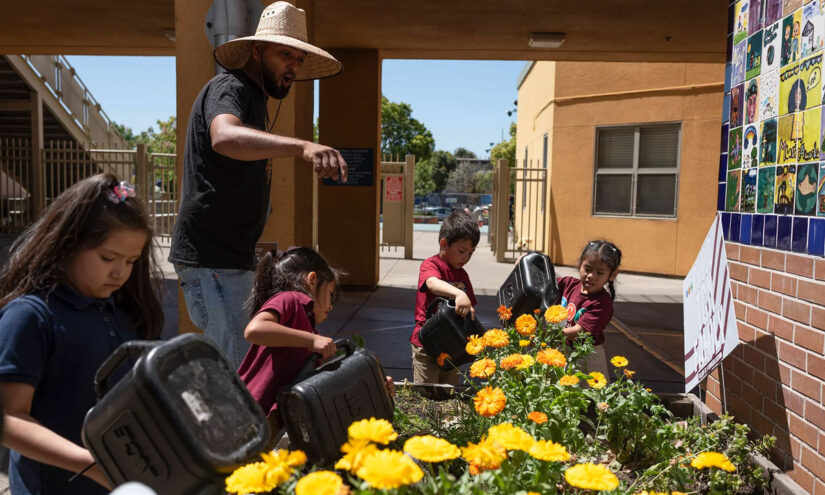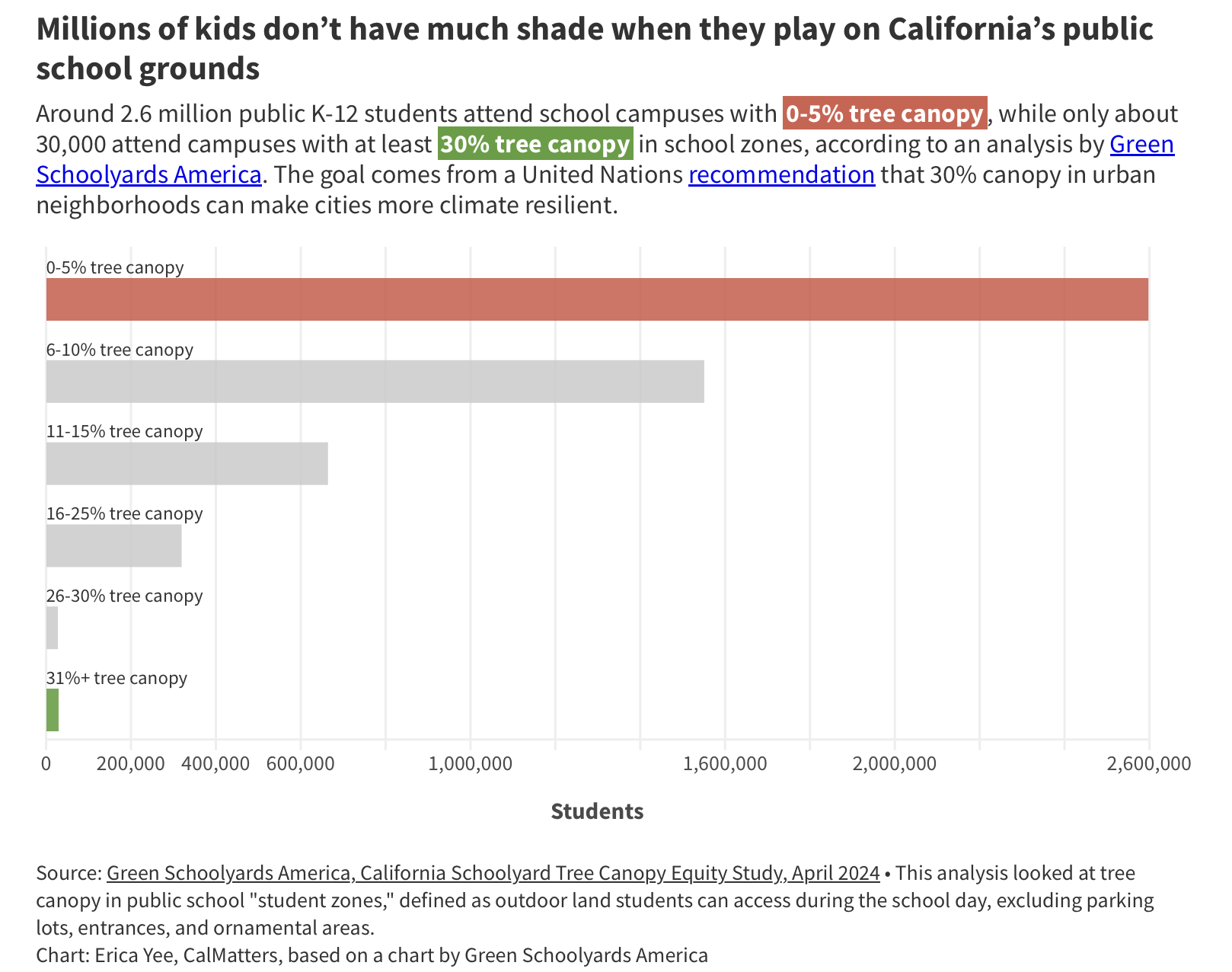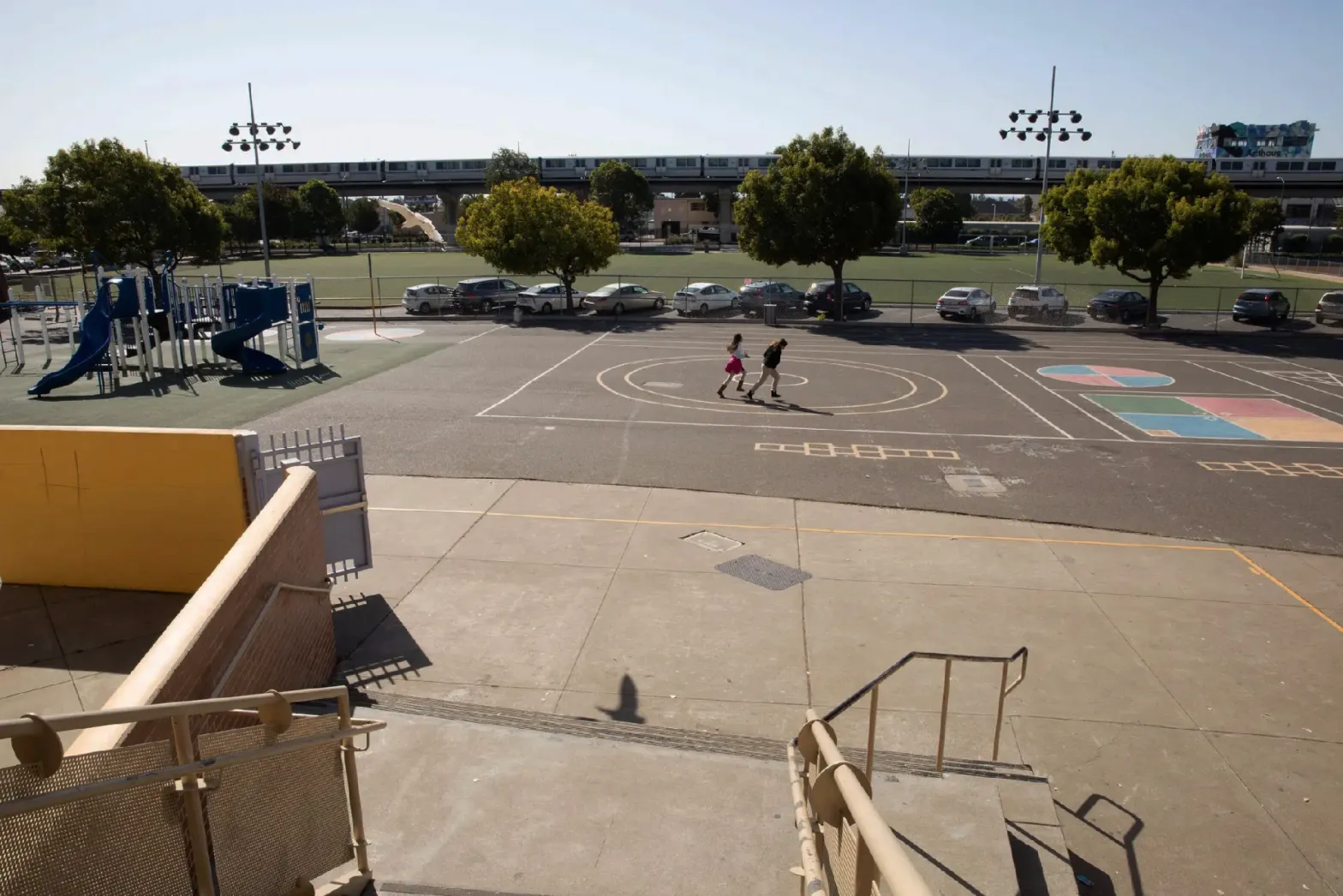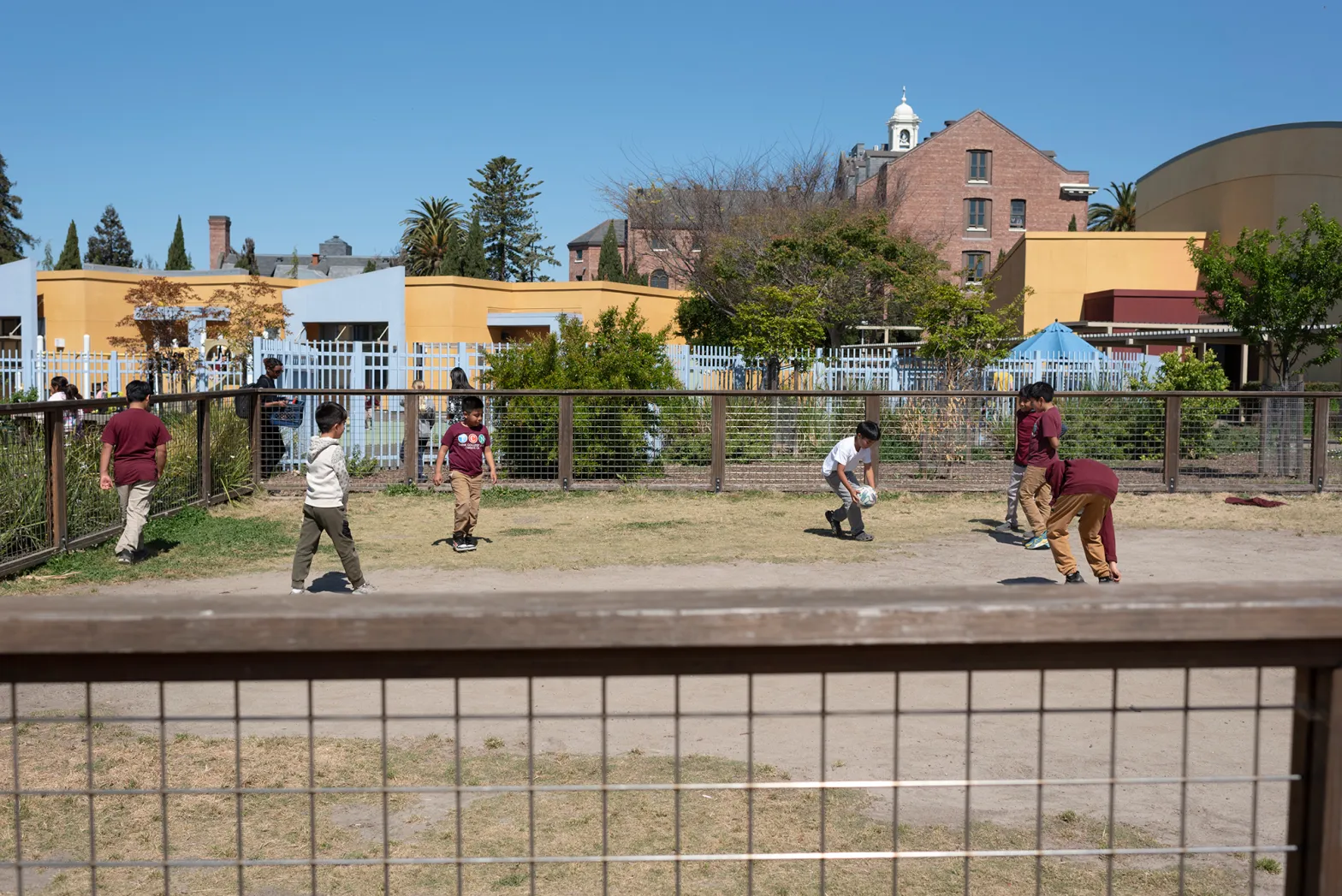During this summer, a team of students from MIT embarked on a journey to the sou …
California Schools Urged to Increase Tree Cover and Reduce Asphalt on School Grounds
Emma Wordsmith

The scorching schoolyards are experiencing rising temperatures, yet only a small percentage of California’s elementary school students have access to shaded areas for play.
In an effort to promote green schoolyards which can incorporate trees, grass, or gardens instead of conventional asphalt or rubber surfaces, researchers and advocates are urging the state to allocate funds.
Supported by over $121 million in state grants, 164 schools are in the process of planning or constructing green schoolyards. The demand for green spaces at schools is evident as more than $350 million in project requests were submitted.
The escalating number of applicants underscores the urgency for greenery at schools amid rising temperatures caused by climate change. However, as the Green Schoolyards program budget wanes and California faces a $56 billion general budget deficit over the next two years, the source of funding for green school initiatives remains uncertain.
Environmental organizations are advocating for a proposed climate bond that includes $350 million for the green schoolyards program. Additionally, they are lobbying for a $1 billion allocation within a proposed $14-$15 billion school infrastructure bond that could be presented to voters in November.
Environment groups emphasized the urgent need for green school funding in a letter to the authors of two school infrastructure bond proposals, Assemblymember Al Muratsuchi and state Sen. Steve Glazer.
Muratsuchi expressed hesitance about dictating the utilization of bond funds, stating, “I’m aware of their request, but we have many other requests to consider.”
On a scorching day with 90-degree temperatures under direct sunlight, grass can reach 95 degrees, while asphalt and rubber play surfaces can exceed 150 and 165 degrees, respectively, according to UCLA Luskin Center research.
Furthermore, forecasts predict a surge in the number of days above 100 degrees nationally by mid-century, with cities like Fresno, Sacramento, and Riverside already experiencing multiple 100+ degree days annually.
Extreme heat and sun exposure can have adverse effects on children, leading to dehydration, headaches, heatstroke, and other health risks, according to the Luskin Center.
Tree shade offers effective cooling benefits, as it can reduce children’s heat exposure by up to 70 degrees. However, most California schools lack tree canopies, with existing trees typically located on the periphery, inaccessible to students during recess.

Green Schoolyards America conducted a study on the tree canopy shading California’s over 10,000 public schools, revealing that an average of 6.4% of student-accessible areas are covered by tree shade.
More than 2.5 million students attend schools with less than 5% tree canopy in student areas, falling far short of recommended urban forestry guidelines that advocate for 30% tree coverage in every city.
Only 29,452 California students currently benefit from the recommended level of tree canopy out of nearly 6 million students statewide.

Sharon Gamson Danks, CEO of Green Schoolyards America, highlighted the need for long-term infrastructure investment to address the lack of green spaces in schools.
Greening projects typically involve tree planting but can also incorporate mulch, grassy fields replacing asphalt, and wooden play structures, according to Šárka Volejníková, Trust for Public Land’s program director for Bay Area parks.
The impact of green space
The César E. Chávez Education Center in Oakland, surrounded by freeways and industrial areas, underwent a complete transformation with a $1.2 million grant from the California Natural Resources Agency’s Urban Greening program.
The school, initially dominated by asphalt, now features increased greenery, trees, and cooler play structures following collaboration with the Trust for Public Land in 2020.
Students were actively involved in the project, measuring temperatures of the previous asphalt and rubber playground and suggesting alternatives.

Now, students engage in outdoor gardening classes and play in a newly created “river” made with bricks, serving as a stormwater runoff system during rainy days.
Eleanor Marsh, the former principal of the school, emphasized the equity implications of greening projects and the positive impact on mental health and academic access for students.
Marsh, now principal at San Pedro Elementary School, acknowledged the financial challenges faced by public schools, relying on external support to enhance the physical environment for students.
Funding possibilities
Manny Gonez, director of policy initiatives at TreePeople, emphasized the timeliness of allocating more resources to green schoolyards.
The proposed climate bond includes a request for $150 million for an urban greening grant and supports the $1 billion proposal for the school infrastructure bond, aiding in the expansion of existing green initiatives.
California voters exhibit support for green schoolyards, as indicated by a survey of 800 voters conducted by the Trust for Public Land.
While some legislators remain noncommittal, the Trust for Public Land advocates for prioritizing funds for green schoolyard projects, particularly for schools in need.
Email: s.guerrero@gmail.com

Glazer declined Calmatters’ interview request, citing limited involvement in the decision-making process of this issue.
While California has committed to increasing tree canopy coverage on schoolyards, the implementation strategy remains unclear.
Recent Nature-Based Solutions Climate Targets published by the State outline plans to prioritize greening schoolyards through the School Facility Program, aiming to integrate green spaces into new school construction projects.
Gov. Gavin Newsom’s extensive efforts to combat extreme heat and secure funding for green schoolyard grants are part of his broader climate initiatives, despite budget cuts in certain areas following a revised proposal.


